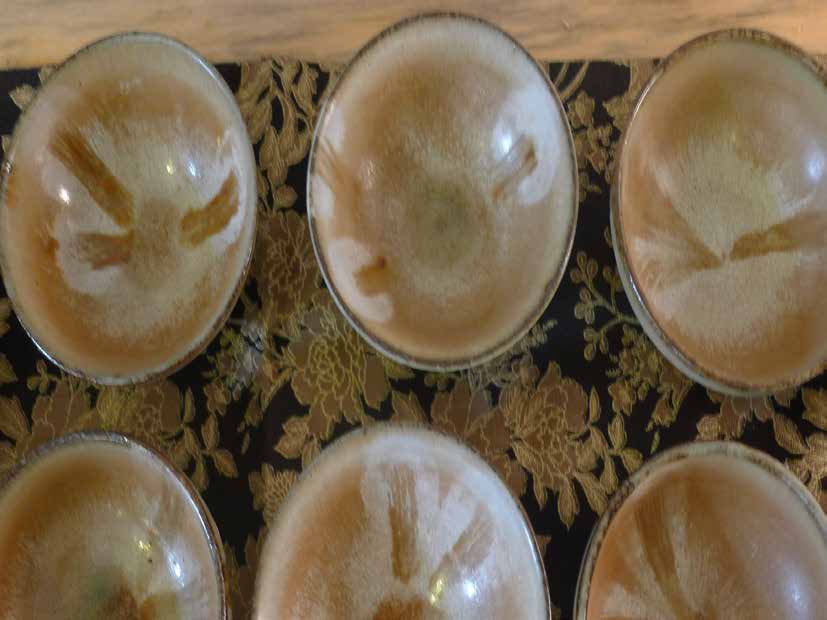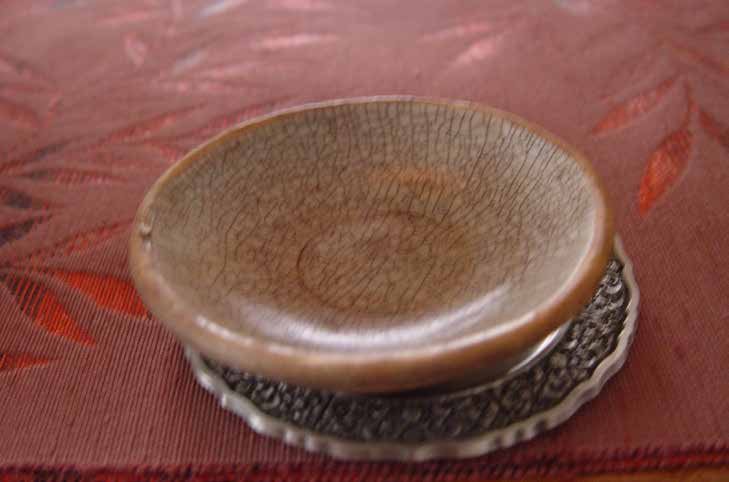
 |
|
As your sensitivity increases, you will begin to recognize the smoothness, or lack thereof, not just in the teaware you use, but one degree further: in what your teaware rests upon. It actually matters quite a bit what kind of coaster a cup sits upon, or what kind of tea boat or tea pillow your teapot is in, etc. Ever-increasing sensitivity is the essence of gongfu tea.
Developing our tea-brewing skills is more than just making better tea. Without a sharpness in our sensitivity, we can't get to the subtler and subtler aspects of tea, which ultimately allow us to move on to the next phase of our work with tea: energy. For that reason, it is nice to try to move deeper into subtler realms of tea as you progress. As we have mentioned in earlier issues, you may have to ignore the flavor/aroma of the tea when you practice for some time. However, after you begin to feel the differences more clearly, these aspects will return naturally. You aren't losing dimensions of your tea, but gaining new ones in addition to the grosser enjoyment of tea as a body.

Before beginning to practice working with the second degree of change, it is important to understand that tea is a liquid - mostly water - and that the water and the tea are both incredibly sensitive. As we have mentioned before, it's a good idea for tea lovers to read about water studies like Dr. Eomoto's Hidden Messages in Water. Suggestions, words, prayers and other energy effect water tremendously. Also, tea itself is equally sensitive, as anyone who has had tea stored in different places can testify to. My master used to make me taste the same tea stored in the shop versus the home, and I was always amazed at how different they were. He said that in a shop, you can't control the environment or the minds of all the guests and there is also a lot of business conducted, and people thinking selfish thoughts, often related to their money. Consequently, it is no wonder that what a cup comes into contact with changes the configuration of the liquid inside. We hope you all experienced some of that with the stickers we sent you as a gift.
The gongfu exercise for this month is to try tapping your cup on different objects and then taking a sip after each tap. The cup needn't rest on the object long, and as you grow more sensitive it will only take the briefest tap for the difference to register. In the beginning, you may want to use objects that are extremely different, so that the effects will be more apparent. Try tapping the cup on a cell phone and taking a sip, then tap an Yixing pot and take a second sip. You may want to use a tea that you are very familiar with and brew it lighter than usual, as with all gongfu experiments. Alternatively, you may want to use hot water.
Getting to the second degree in teaware is a very important step that opens up tons of doors in your tea practice. You will make quick strides once you've developed an acumen in this, and mastery (gongfu) isn't far off - maybe just a few taps away...

